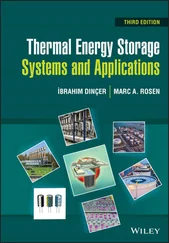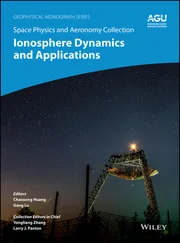Overall, the content of this book will enable students to have a better understanding of the theory through real‐world engineering application examples.
Abdullah Eroglu
Greensboro, NC, USA
May 2021
Abdullah Eroglu received his PhD degree in electrical engineering from the Electrical Engineering & Computer Science Department at Syracuse University, in 2004. He was a Senior RF Design Engineer with MKS Instruments, from 2000 to 2008, where he was involved in the design of RF amplifier systems. He joined Purdue University Fort Wayne in 2008 and worked as Professor and Chair of the Electrical and Computer Engineering Department until 2018. Since then, he has been Emeritus Professor at Purdue University and Professor and Chair at the Electrical and Computer Engineering Department, North Carolina A&T State University. He was a Faculty Fellow with the Fusion Energy Division, Oak Ridge National Laboratory, in 2009. His current research interests include RF/microwave/THz circuit design and applications, RF amplifiers and topologies, antennas, RF metrology, wave propagation, and radiation characteristics of anisotropic, gyrotropic, and metamaterials. He has published over 140 journal and conference publications, and has several patents in his area of expertise. He is the author of five books and co‐editor of one book. He is a reviewer and on the editorial board of several journals.
Spending a lifetime with a researcher sometimes can be challenging. My wife and my children do just that, and they are always with me at every step along the way. They support me for every project – and gave me the encouragement I needed to complete this book, too.
I would also like to thank my editor, Juliet Booker, for her patience and support of this book. She was very understanding and gave me the time I needed to complete the book.
About the Companion Website
RF/Microwave Engineering and Applications in Energy Systems is accompanied by a companion website:
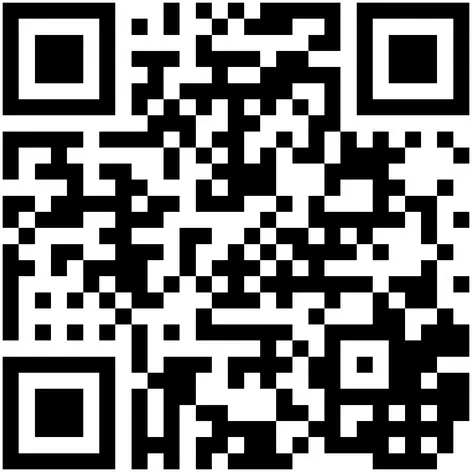
www.wiley.com/go/eroglu/rfmicrowave
The website includes:
Solutions to End of Chapter Problems
1 Fundamentals of Electromagnetics
1.1 Introduction
The fundamentals of electromagnetics constitute steps toward the advancement of technology in communication, radar, and energy and power applications. In this chapter, some important theorems and mathematical concepts are discussed with examples.
1.2 Line, Surface, and Volume Integrals
1.2.1 Vector Analysis
A scalar quantity gives us a single value of some variable for every point in space such as voltage, current, energy, and temperature. A vector is a quantity which has both a magnitude and a direction in space. Velocity, momentum, acceleration, and force are examples of vector quantities. A mathematical representation of a vector is given in (1.1).
(1.1) 
A vector can be represented as a directed line segment, as shown in Figure 1.1.
In Figure 1.1, the magnitude of the vector is given by | A |. The unit vector which defines the direction of the vector is given by
(1.2) 
You may consider falling snowflakes as an example for a vector which has direction and magnitude.
1.2.1.1 Unit Vector Relationship
It is frequently useful to resolve vectors into components along the axial direction using general unit vectors, as given by (1.3)
(1.3) 
Then
(1.4a) 
(1.4b) 
(1.4c) 
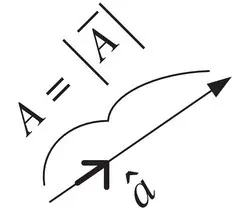
Figure 1.1 Vector representation.
In Cartesian coordinate system, unit vectors are defined as
(1.5) 
So
(1.6a) 
(1.6b) 
(1.6c) 
In a cylindrical coordinate system, unit vectors are defined as
(1.7) 
Hence
(1.8a) 
(1.8b) 
(1.8c) 
In a spherical coordinate system, unit vectors are defined as
(1.9) 
which leads to
(1.10b) 
(1.10b) 
(1.10c) 
1.2.1.2 Vector Operations and Properties
Dot Product
The dot product between two vectors results in a scalar quantity. One simple application example for a dot product is the work that is done by a force for displacement from one point to another. Consider vectors  and
and  shown in Figure 1.2a. The dot product of these two vectors are then expressed as
shown in Figure 1.2a. The dot product of these two vectors are then expressed as
Читать дальше
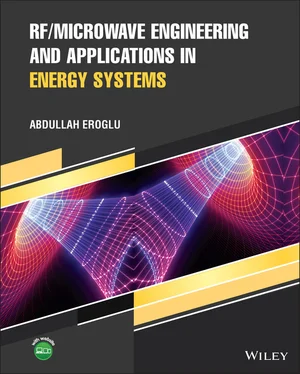




















 and
and  shown in Figure 1.2a. The dot product of these two vectors are then expressed as
shown in Figure 1.2a. The dot product of these two vectors are then expressed as



